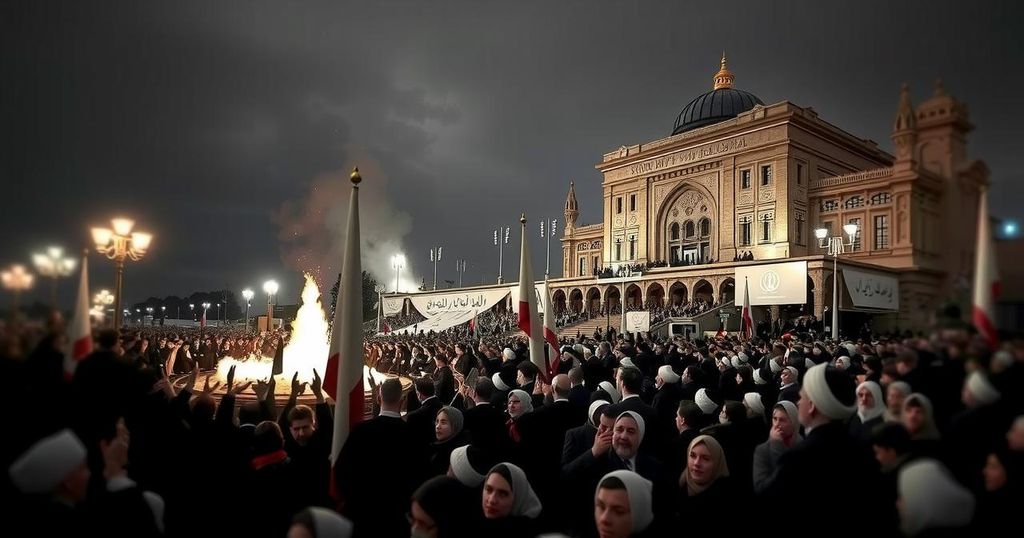The White Revolution in Iran: Transformative Ambitions and Political Repercussions

The Pahlavi regime’s White Revolution launched ambitious land and social reforms between 1960 and 1963, seeking to modernize Iran; however, it faced significant resistance from clerics, ultimately leading to societal unrest and the political upheaval that culminated in the Islamic Revolution. The lack of political participation and rising discontent fermented a coalition against the shah, fueled by economic crises and the influence of Ayatollah Khomeini.
Between 1960 and 1963, Iran witnessed significant transformations under the Pahlavi regime, initiated by the shah’s program aimed at industrial growth. This period was marked by the suppression of political opposition as the shah eliminated political parties that challenged his autocratic rule. In 1961, the 20th Majles was disbanded, paving the way for the 1962 land reform law, which redistributed land from the wealthy landed class to small farmers. The government compensated the former landlords with shares in state-run industries, while also enabling cooperatives in rural areas to promote agricultural development. The land reforms were a precursor to what became known as the “White Revolution,” a more extensive social and economic reform initiative launched in 1963. This program aimed at redistributing land to approximately 2.5 million households and included the establishment of health and literacy corps tailored for rural development. It also entailed significant advancements in women’s rights and the diminishing influence of tribal groups. During this era, there was a notable increase in per capita income, largely fueled by rising oil revenues that financed numerous industrial projects. However, the shah’s reforms faced backlash, particularly from Shiʿi clerics who condemned the liberalization of women’s roles as contrary to Islamic values. The reforms weakened the traditional power structures that clerics had long relied upon, notably diminishing their influence over legal matters and education. In 1963, Ayatollah Ruhollah Khomeini, a vocal critic, escalated protests that led to violent government reprisals and ultimately his exile. In exile, Khomeini formulated his doctrine of “velāyat-e faqīh,” articulating a vision for an Islamic government led by clerical authority. Despite the ambitious land reform, the support systems that traditionally facilitated farming collapsed, leading to high failure rates among new farmers and mass migrations to urban centers like Tehran. The migration exacerbated social challenges, creating economic disparity and increasing dissatisfaction with living conditions. In terms of foreign policy, Iran pursued an independent course, emphasizing peaceful relations with neighboring countries and promoting cooperation through treaties. The shah’s government heavily relied on American military and economic support, which positioned Iran as a formidable regional power during this period. However, this reliance also bred discontent among various sectors of society, especially as economic turmoil developed in the 1970s. The oil shocks and high inflation rates strained the economy, despite initial growth driven by oil revenues. Coupled with political repression, these factors contributed to rising social unrest and widespread opposition to the regime, further amplified by Khomeini’s growing influence among disenchanted factions of the population. As the political landscape grew increasingly unstable, coalitions of secular and religious groups began to coalesce against the shah’s regime, leading to a significant shift in Iran’s political trajectory.
The era of the White Revolution and its reforms under the Pahlavi dynasty represents a critical juncture in Iranian history. By focusing on economic modernization without corresponding political liberalization, the shah’s administration inadvertently sowed the seeds of its own challenges. Understanding the reforms and responses they elicited is essential for comprehending the subsequent political upheaval that led to the Islamic Revolution of 1979.
In conclusion, the White Revolution heralded a transformative period in Iran’s modern history, marked by economic ambitions and significant social reforms, yet it simultaneously undermined traditional power structures and intensified political repression. The backlash from various segments of society ultimately stoked discontent, leading to a coalition against the Pahlavi regime that would culminate in the Islamic Revolution. The interplay between modernization and clerical authority during this era underscores the complexities of Iran’s socio-political landscape.
Original Source: www.britannica.com








